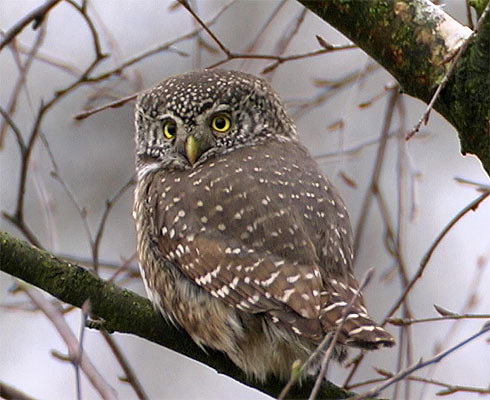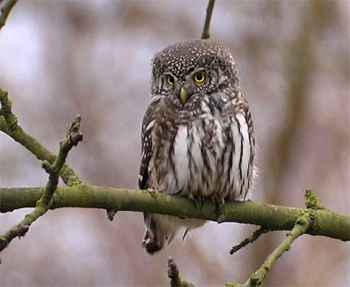(Links, Vocalisation head & Bird Songs tags added) |
|||
| Line 11: | Line 11: | ||
==Distribution== | ==Distribution== | ||
| − | Boreal forests of Scandinavia, Finland, Estonia, Latvia, northwest and central Russia across to Siberia, including Sakhalin and some parts of northeastern China. Also occuring in mountains of central and eastern Europe, particulary in the Alps (France, Italy, Switzerland, Austria, Germany, Slovenia), the Carpathian Mountains (Slovakia, Romania) and the Ore mountains (Germany, Czech Republic). | + | Boreal forests of [[Scandinavia]], [[Finland]], [[Estonia]], [[Latvia]], northwest and central [[Russia]] across to [[Siberia]], including [[Sakhalin]] and some parts of northeastern [[China]]. Also occuring in mountains of central and eastern [[Europe]], particulary in the Alps ([[France]], [[Italy]], [[Switzerland]], [[Austria]], [[Germany]], [[Slovenia]]), the Carpathian Mountains ([[Slovakia]], [[Romania]]) and the Ore mountains ([[Germany]], [[Czech Republic]]). |
| − | Adults are generally resident, but sometimes move to lower altitudes (south) in severe winters. Immatures often roam about in Autumn and Winter, and have even been seen as far west as Britain. | + | Adults are generally resident, but sometimes move to lower altitudes (south) in severe winters. Immatures often roam about in Autumn and Winter, and have even been seen as far west as [[Britain]]. |
| − | [[Image:Eurasian_Pygmy-Owl2.jpg|thumb| | + | [[Image:Eurasian_Pygmy-Owl2.jpg|thumb|350px|left|Photo by Rob<br/>Location: Silvakra, Sweden]] |
==Taxonomy== | ==Taxonomy== | ||
Two subspecies are recognized, ''Glaucidium passerinum passerinum'' in the western part of the range and ''Glaucidium passerinum orientale'' in the eastern part. They intergrade in western Siberia and the Altai Mountains. First described by Carolus Linnaeus in 1758. | Two subspecies are recognized, ''Glaucidium passerinum passerinum'' in the western part of the range and ''Glaucidium passerinum orientale'' in the eastern part. They intergrade in western Siberia and the Altai Mountains. First described by Carolus Linnaeus in 1758. | ||
| Line 29: | Line 29: | ||
Breeding season is from April to July. Eurasian Pygmy-Owls nest in natural holes or holes excavated by woodpeckers. They also accept nestboxes. Usually 4 to 7 eggs are laid which are incubated by the female while the male is hunting. The incubation takes about 30 days and after another 30 days the young are flegded. They're fed for another month by their parents before they are chased out of the parent's territory. | Breeding season is from April to July. Eurasian Pygmy-Owls nest in natural holes or holes excavated by woodpeckers. They also accept nestboxes. Usually 4 to 7 eggs are laid which are incubated by the female while the male is hunting. The incubation takes about 30 days and after another 30 days the young are flegded. They're fed for another month by their parents before they are chased out of the parent's territory. | ||
| − | == | + | ===Vocalisation=== |
<flashmp3>Glaucidium passerinum (song).mp3</flashmp3><br /> | <flashmp3>Glaucidium passerinum (song).mp3</flashmp3><br /> | ||
''[[Media:Glaucidium passerinum (song).mp3|Listen in an external program]]'' | ''[[Media:Glaucidium passerinum (song).mp3|Listen in an external program]]'' | ||
| Line 35: | Line 35: | ||
{{GSearch|Glaucidium+passerinum}} | {{GSearch|Glaucidium+passerinum}} | ||
| − | [[Category:Birds]][[Category:Glaucidium]] | + | [[Category:Birds]][[Category:Glaucidium]][[Category:Bird Songs]] |
Revision as of 07:54, 15 October 2008
- Glaucidium passerinum
Identification
Length: Males 15.2-17cm (6-6.7"); females 17.4-19cm (6.8-7.5") Weight: Males 50-65g (1.76-2.3oz); females 67-77g (2.36-2.7oz) Mainly dark rufous to greyish-brown above, with whitish spots; breast streaked brown and off-white, with mottled brown flanks; marked white half collar around nape; tail brown to grey-brown, with 5 narrow, off-white bars; round head, no ear tufts; face whitish with brown streaks; eyes yellow; bill yellowish; legs and toes are feathered. The subspecies orientale has paler upperparts with purer white and more sharply defined spots. Also the breast and flanks are more strongly marked brown.
The smallest European owl, it often perches at the top of trees.
Distribution
Boreal forests of Scandinavia, Finland, Estonia, Latvia, northwest and central Russia across to Siberia, including Sakhalin and some parts of northeastern China. Also occuring in mountains of central and eastern Europe, particulary in the Alps (France, Italy, Switzerland, Austria, Germany, Slovenia), the Carpathian Mountains (Slovakia, Romania) and the Ore mountains (Germany, Czech Republic).
Adults are generally resident, but sometimes move to lower altitudes (south) in severe winters. Immatures often roam about in Autumn and Winter, and have even been seen as far west as Britain.
Taxonomy
Two subspecies are recognized, Glaucidium passerinum passerinum in the western part of the range and Glaucidium passerinum orientale in the eastern part. They intergrade in western Siberia and the Altai Mountains. First described by Carolus Linnaeus in 1758.
The Eurasian Pygmy-Owl is sometimes considered to form a superspecies with the Collared Owlet, the Pearl-spotted Owlet, the Northern Pygmy Owl and the Mountain Pygmy Owl. However, new DNA evidence denies a close relation to the Northern Pygmy-Owl of North America.
Habitat
Mainly coniferous forest in the boreal zone and corresponding montane coniferous and mixed forest in higher mountains. Prefers semi-open mature forest with clearings. Nest sites are usually found in moist or swampy areas, near a water source and with groups of younger spruces nearby.
Behaviour
Eurasian Pygmy-Owls are hunting for small mammals, especially voles and small birds. They relie on surprise, sitting on a perch and waiting for their prey. They hunt tits and finches, but also woodpeckers or thrushes. Their prefered time is at dusk or dawn, but they also hunt at day and can be seen sometimes in the middle of the day, sitting on the top of a tree.
Breeding season is from April to July. Eurasian Pygmy-Owls nest in natural holes or holes excavated by woodpeckers. They also accept nestboxes. Usually 4 to 7 eggs are laid which are incubated by the female while the male is hunting. The incubation takes about 30 days and after another 30 days the young are flegded. They're fed for another month by their parents before they are chased out of the parent's territory.
Vocalisation
<flashmp3>Glaucidium passerinum (song).mp3</flashmp3>
Listen in an external program





